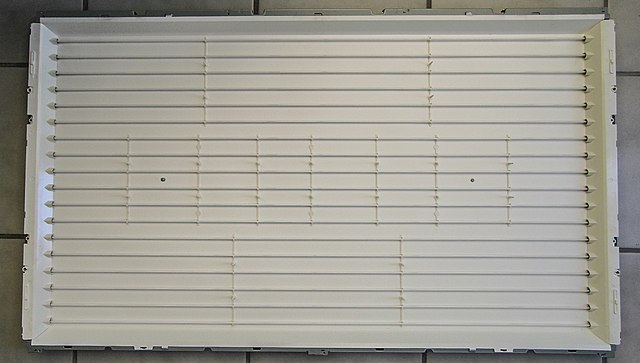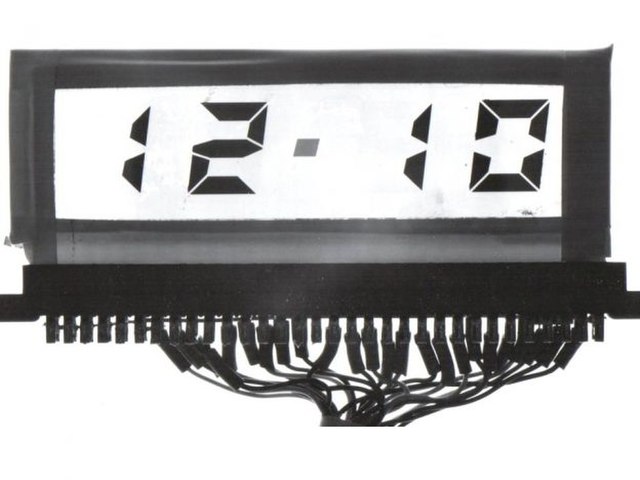A backlight is a form of illumination used in liquid-crystal displays (LCDs) that provides illumination from the back or side of a display panel. LCDs do not produce light by themselves, so they need illumination to produce a visible image. Backlights are often used in smartphones, computer monitors, and LCD televisions. They are used in small displays to increase readability in low light conditions such as in wristwatches. Typical sources of light for backlights include light-emitting diodes (LEDs) and cold cathode fluorescent lamps (CCFLs).
Views of a liquid-crystal display, both with electroluminescent backlight switched on (top) and switched off (bottom)
18 parallel CCFLs as backlight for an LCD TV
A liquid-crystal display (LCD) is a flat-panel display or other electronically modulated optical device that uses the light-modulating properties of liquid crystals combined with polarizers. Liquid crystals do not emit light directly but instead use a backlight or reflector to produce images in color or monochrome.
An LCD screen used as a notification panel for travellers
LCD in a Texas Instruments calculator with top polarizer removed from device and placed on top, such that the top and bottom polarizers are perpendicular. As a result, the colors are inverted.
A Casio Alarm Chrono digital watch with LCD
Demonstration digital clock made in 1973 using then recently developed Cyanobiphenyl liquid crystals






